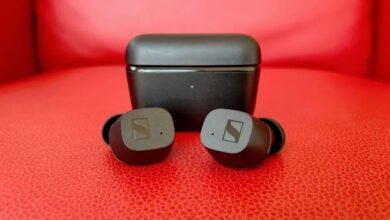The 9 Best Wi-Fi 6 Routers of 2022
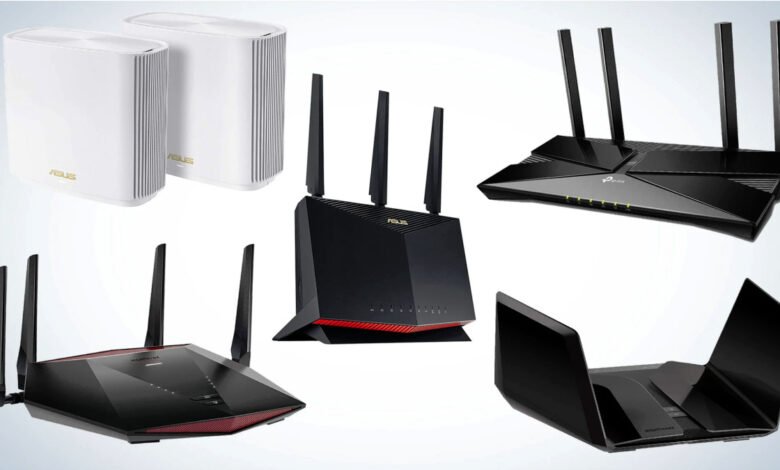
The introduction of the new 802.11ax Wi-Fi 6 standard has ushered in a brand-new era of even faster and more potent wireless routers, ushering in an exciting moment for Wi-Fi technology. There is no excuse not to purchase one of the top Wi-Fi 6 routers if you are in the market for an upgrade now that the Wi-Fi 6 standard is fully established. These modern routers can support more devices on your home network and give even better wireless rates to Wi-Fi 6 clients that are compatible.
You do not have to worry about compatibility issues with your older wireless devices, even if Wi-Fi 6 is increasingly the standard on most new smartphones, tablets, and laptops. You may purchase a Wi-Fi 6 router immediately to ensure you are prepared for the newest iPhones, iPods, Macs, Samsung Galaxy smartphones, and cutting-edge game consoles like Sony’s new PlayStation 5. The best Wi-Fi 6 routers fully support the more popular 802.11ac wireless five standards. The finest Wi-Fi 6 routers are perfect for anyone who wants to stay on the cutting edge of technology, but with prices coming down, anyone looking to upgrade their router should give them serious thought.
1. Asus RT-AX88U AX6000 Dual-Band Wi-Fi 6 Router
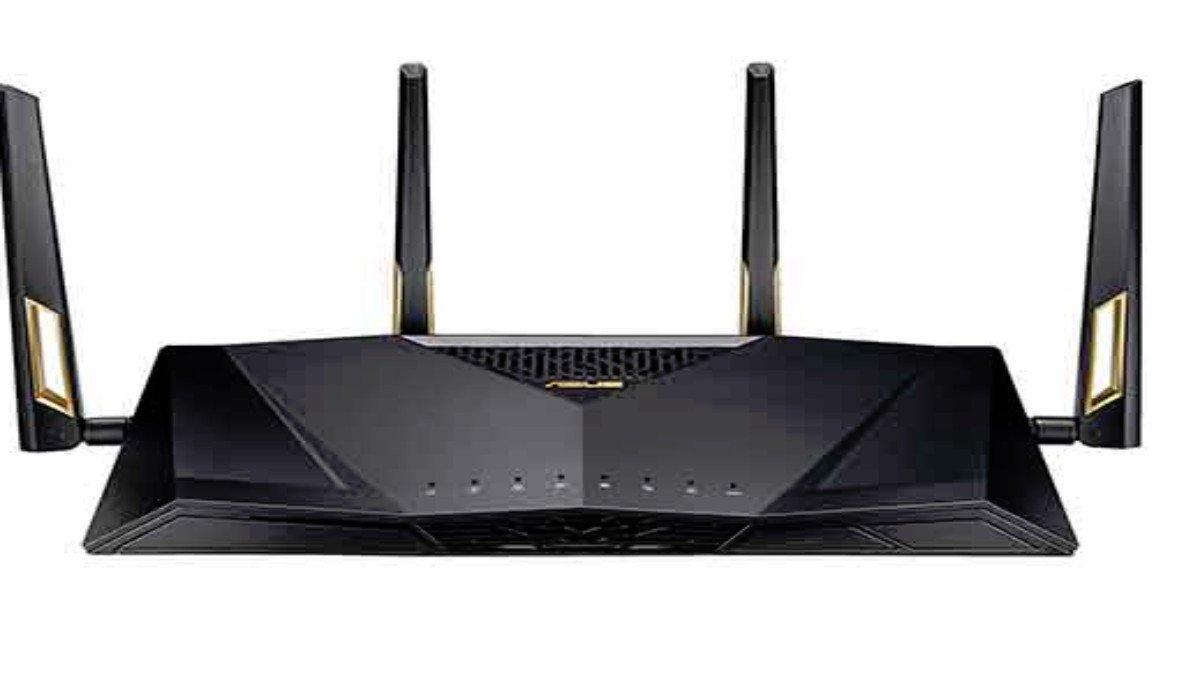
One of the earliest Wi-Fi 6 routers was the Asus RT-AX88U, which is still our top choice due to its ideal ratio of cost, performance, and adaptability. Given that its predecessor, the RT-AC88U, was one of the unlimited Wi-Fi 5 routers we have tested, this router has large shoes to fill. The good news is that the RT-AX88U does a commendable job of transferring that router’s technology into the Wi-Fi 6 generation, incorporating an almost identical design and all of the same fundamental capabilities with an entirely new level of power beneath the hood.
With speeds of up to 4.8Gbps on the 5GHz band and 1.2Gbps on the 2.4GHz side, the AX6000 dual-band Wi-Fi provides more than enough performance for most households. It manages earlier Wi-Fi 5 devices reasonably well, with its four beamforming antennas sending out enough power to cover a 5,000-square-foot home. You will need Wi-Fi 6 clients to take advantage of these peak speeds fully. Beyond the actual Wi-Fi performance, you will also discover an extensive selection of eight Gigabit Ethernet ports in the back.
If you need to connect many devices, these ports may eliminate the need for a separate network hub or switch. Like most of Asus’ other routers, the RT-AX88U is also not lacking in configurability and security features. In particular, we appreciate that Asus pre-installed its AiProtection Pro suite on the RT-AX88U rather than forcing customers to wait for a later firmware update, as many other manufacturers did with their early Wi-Fi 6 routers. This gives us hope that Asus will continue to deploy critical security and feature upgrades for the RT-AX88U ahead of schedule.
Pros
- Very relaxing
- Excellent audio quality
- Superior noise cancellation
- Design that is tough
Cons
- Appearance that has aged
- Outstanding battery life
2. TP-Link Archer AX10 AX1500 Wi-Fi 6 Router

The Archer AX10 from TP-Link dispels the misconception that Wi-Fi 6 routers are expensive due to their low cost and excellent value. It does not have all the bells and whistles of more expensive Wi-Fi 6 routers—there are not even any USB ports—but it nevertheless offers good Wi-Fi 6 performance for a modest-sized house or apartment. While the Archer AX10’s AX1500 speed rating is undoubtedly lower than what you are used to seeing on Wi-Fi 6 routers, it still indicates that you are getting a strong 1.2Gbps of throughput on the 5GHz band, which is more than plenty for 4K streaming and Zoom conversations.
The 2.4GHz side’s 300Mbps maximum speed is a drawback, although nowadays, most customers only require that for low-bandwidth intelligent home accessories. Although it cannot support as many devices, this router performs remarkably well above its weight class at 5GHz, with single-client speeds that equal the AX50 from TP-Link with an AX3000-equipped chip. Unsurprisingly, a Wi-Fi 6 router priced like the AX10 makes some compromises, but in this case, we believe TP-Link made the right decision. The 2.4GHz band, for example, only supports the outdated 802.11n Wi-Fi 4 standard, but it is a sensible trade-off given that Wi-Fi 6 gives no real performance advantage below 300Mbps.
Additionally, the TP-Link HomeCare security and parental control capabilities are not included. While the rudimentary quality of service support is provided, it is only capable of prioritizing traffic for a small number of client devices rather than by application or type of traffic. You might, for example, give your smart TV or gaming console priority, but not streaming or gaming traffic as a whole. However, it also has many other sophisticated choices, such as the capacity to configure it as a VPN server and modify Wi-Fi, port-forwarding, and even Dynamic DNS settings. Even though it does not have a USB port, it still has the standard four Gigabit Ethernet connections, so there will not be any trouble fitting your connected devices in.
Pros
- Excellent value for the money
- Excellent audio quality
Cons
- Lacks sophisticated parental control capabilities
- Zero USB ports
3. Asus RT-AX89X 12-stream AX6000 Dual Band Wi-Fi 6 Router

The Asus RT-AX89X Wi-Fi 6 router goes above and above for consumers with the quickest broadband connections. Eight high-performance beamforming antennas and a staggering number of high-performance wired connectors are combined with fast AX6000 dual-band Wi-Fi to ensure that you can handle multi-gigabit plans and deliver top speeds throughout even the busiest houses. In reality, the RT-AX89X shows that tri-band routers for Wi-Fi 6 do not always provide more fantastic performance until there are a lot of 5GHz devices competing for bandwidth.
You will find that dual-band routers are more than up to the challenge of handling busy networks, and our testing showed that the RT-AX89X could hold its own against Asus’ tri-band GT-AX11000 when it comes to delivering raw speed, even at extended ranges, thanks to the advanced MU-MIMO and OFDMA technologies that underpin Wi-Fi 6. The RT-pair AX89X’s of 10Gbps Ethernet and SFP+ ports, which provide the fastest wired performance you will find in a home router, set it apart.
You can use them to connect a high-speed network attached storage (NAS) device or even connect another RT-AX89U elsewhere in your home for the best high-performance Wi-Fi 6 coverage possible using Asus’ AiMesh 2.0 technology. This enables you to take advantage of the fastest broadband currently available—and beyond.
As if that were not enough, you will also discover two 5Gbps USB 3.2 connections, eight Gigabit Ethernet ports, and all the other beautiful features from Asus like AiProtection Pro and a tonne of customizing choices to satisfy even the savviest power users.
Pros
- Excellent value for the money
- Excellent audio quality
Cons
- Lacks sophisticated parental control capabilities
- Zero USB ports
4. Netgear Orbi AX6000 Wi-Fi 6 Mesh System
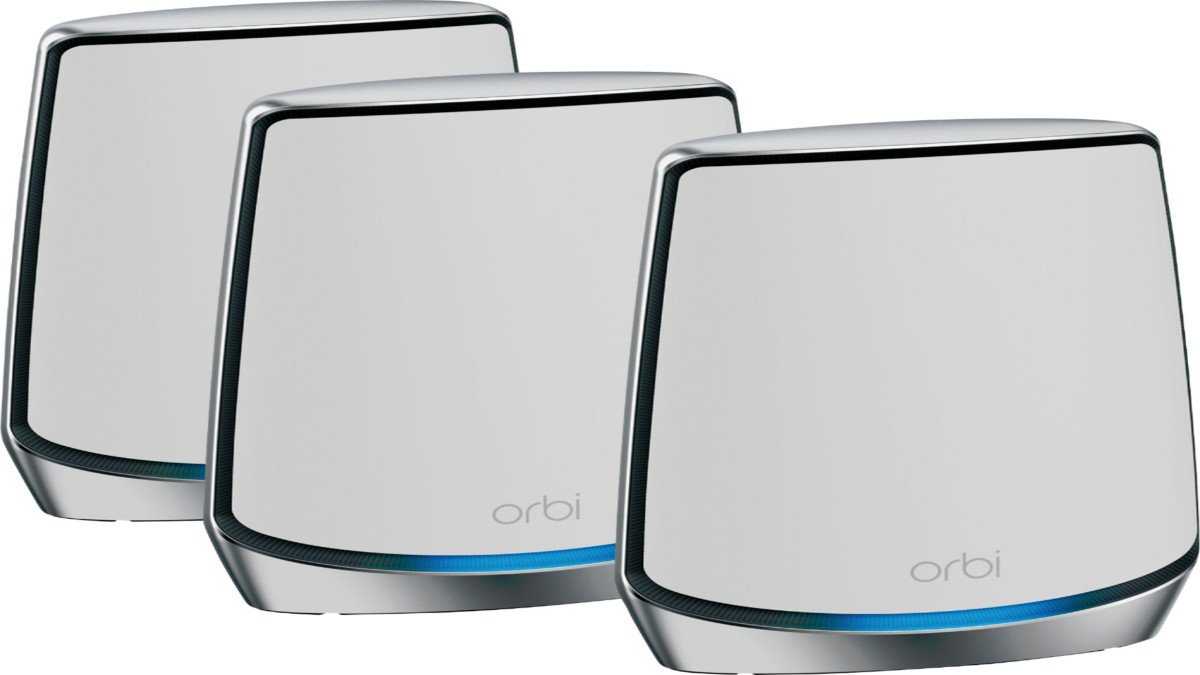
Netgear’s Orbi AX6000 is a mesh wi-fi six system that’s guaranteed to give you top speeds in even the largest homes. It is not surprising as it builds on the incredible power and features of the standard Netgear Orbi, which is already one of our top-rated mesh wi-fi network systems. While it does not come cheap, the Orbi Tri-Band Mesh wi-fi six system dials just about everything from the original up to 11, with greater network capacity that can offer top speeds to even the busiest homes.
Like the classic Orbi, the AX6000 version dedicates one of its 5GHz bands to act as a dedicated backhaul channel—in this case at faster 2.4Gbps speeds—to keep things moving fast between all of the satellite units. Unlike the wi-fi 5 version, however, the user-facing 5GHz band still offers the same 2.4Gbps bandwidth, courtesy of the faster 802.11ax speeds. On top of that, higher-end wi-fi six clients can get speeds of up to 1.2Gbps on the 2.4GHz side. The result is enough bandwidth to handle 4k streaming, fast-paced gaming, and uninterrupted video calling from multiple devices throughout your home.
The standard pair of units will easily cover homes of up to 5,000 square feet, and if you need more, you can add up to five more satellite units to handle even the most sprawling estates. You will also get four Gigabit Ethernet ports on each unit, with full speeds back to the main router for multiple wired devices, thanks to the dedicated 2.4Gbps backhaul channel. Plus, a 2.5Gbps WAN port on the main router has you ready to hook up to the fastest broadband connections. Unfortunately, suppose you are coming from the original Orbi system. In that case, you may be disappointed by the lack of USB ports on this higher-end model, but the good news is that it maintains the same straightforward setup process as the rest of the Orbi family.
Pros
- Blazing fast performance
- Excellent coverage
- 2.5Gbps WAN port
Cons
- Very expensive
- Lacks some advanced features
- No USB ports
5. Eero Pro 6 Mesh Wi-Fi 6 System
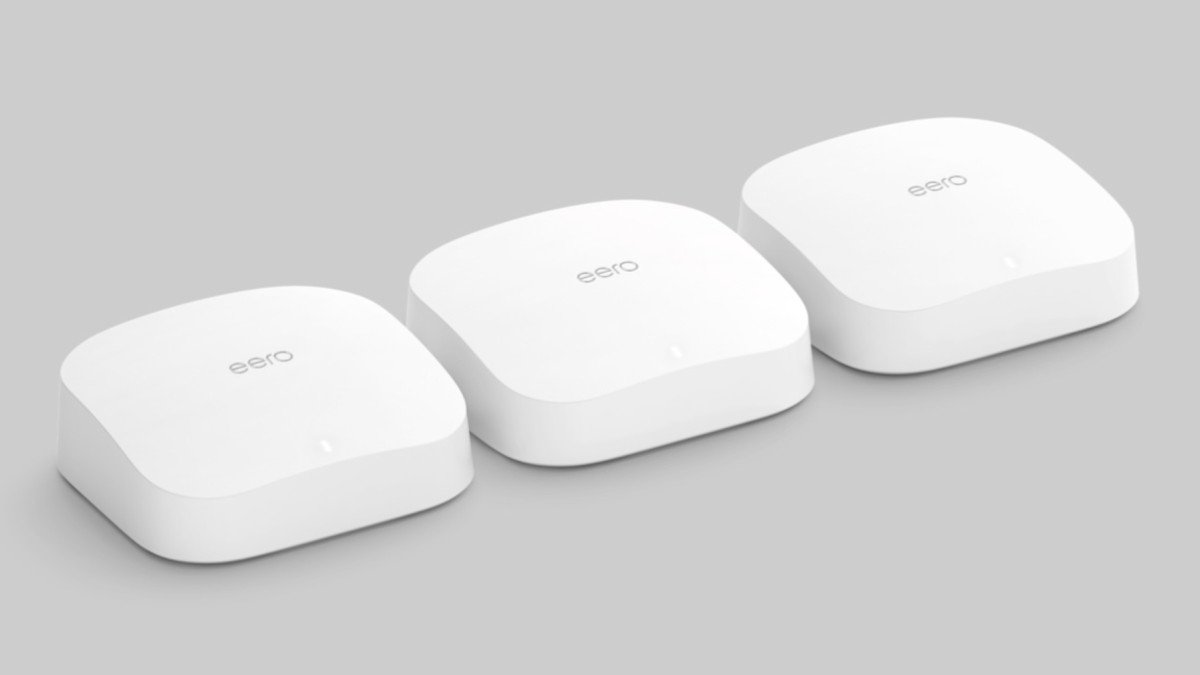
As the name implies, the Eero Pro 6 is the encore to the acclaimed Eero Pro mesh wi-fi system. It adds wi-fi six capabilities while retaining the same features that made its predecessor so popular, particularly its intuitive mobile-driven software interface that makes setting up an Eero system a cinch—even for somebody with absolutely no networking experience. The built-in anti-malware and parental controls are also very intuitive, although it is worth noting that, like many other routers, they do require a small recurring subscription fee. However, thanks to its cloud-based management system, you can monitor and access all the settings from anywhere you happen to be.
The Eero Pro 6 works along the same principles as the older wi-fi 5 version, with a single base station that acts as your primary router and one or more satellite units that you deploy around the home to blanket it with wi-fi; a trio of three units can handle up to 6,000 square feet, and you can add more as you need them to expand coverage even further. As a wi-fi six system, it offers tri-band AX4200 speeds, with the two 5GHz bands split between 2.4Gbps and 1.2Gbps, while the 2.4Gbps band can deliver 600mbps. It is similar to Linksys’ Velop AX4200 system, although it does not deliver quite the same range.
Unfortunately, the Eero Pro 6 changes the roster regarding the expansion units. You can still add as many additional Eero Pro 6 units as you like, with tri-band wi-fi and dual Gigabit Ethernet ports on each. However, the plug-in Eero Beacons have been replaced by tabletop extenders that look almost identical to the primary router but lack the Ethernet ports. It is an unfortunate change, as we quite liked the more discrete design of the Beacons, and they could even double as nightlights around the home. That said, you can still add the Beacons—or any other wi-fi 5 Eero devices—to your mesh system, although you will lose the benefits of wi-fi six technology in those areas of your home. Sadly, the Eero Pro 6 also remains one of the rare routers that omit support for the PPPoE protocol used by many ISPs, which could make it a non-starter for some homes. However, as long as your broadband connection does not rely on PPPoE, the Eero Pro 6 offers an excellent way for beginners to get up and running quickly and easily, with a mesh wi-fi system that works and can grow with your needs.
Pros
- Extremely easy to set up
- Solid W-Fi performance
- Compact design
Cons
- Security features require an ongoing subscription.
- No web interface
- Lacks advanced features
6. Asus ROG Rapture GT-AX11000 Wi-Fi 6 Router
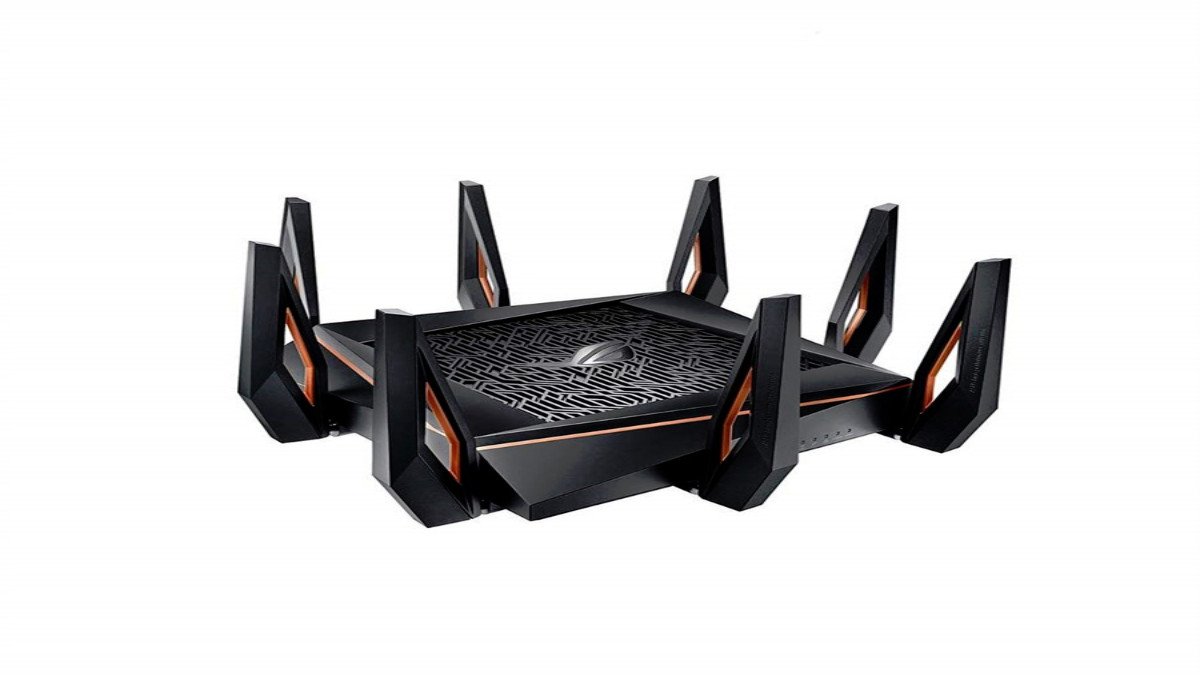
Asus’ ROG Rapture GT-AX11000 is a gaming powerhouse, but do not let the designation fool you. It is also a tremendous high-performance router to handle the needs of any large and busy home, even if you do not have a gamer in the family. Packing a powerful quad-core CPU and tri-band 802.11ax wi-fi six support, it can handle just about anything you can throw at it, from hardcore gaming to 4K and 8K streaming.
Dual 5GHz bands deliver speeds of up to 4.8Gbps each, and the 1.2Gbps 2.4GHz band offers plenty of performance for older devices and even more modern wi-fi six devices at greater distances from the primary router. However, with its eight beamforming antennas, it is pretty hard to stray from its 5ghz solid coverage. There are also four Gigabit Ethernet ports, plus a higher-speed 2.5Gbps gaming port and dual USB 3 ports, so you have lots of room to hardwire in your console, gaming PC, or external storage and NAS devices.
While tri-band wi-fi six may be overkill for many homes, especially with new 802.11ax technology so much more adept at handling multiple devices, it can still be an excellent investment. Since this is primarily a gaming router, the extra 5GHz band offers the extra edge that gamers need, letting you keep your gaming traffic in a low latency fast lane, away from all of your other wi-fi devices. However, the GT-AX11000 also makes a great anchor if you want to expand your network with other routers that use Asus’ AiMesh 2.0 technology since the third band can be used as a wireless backhaul, similar to what Netgear’s Orbi does. In addition to premium Asus features like AiProtection Pro and a built-in VPN server, the GT-AX11000 is packed with many other great gaming tools. This includes the WTFast Gamers Private Network, adaptive quality of service to prioritize gaming traffic, and VPN Fusion to protect your privacy without slowing down your games.
Pros
- Fast Tri-Band wi-fi 6
- Expansive coverage
- Cutting-edge game optimization features
Cons
- Large footprint
- Pricey
7. TP-Link Archer AX50 AX3000 Dual Band Gigabit Wi-Fi 6 Router
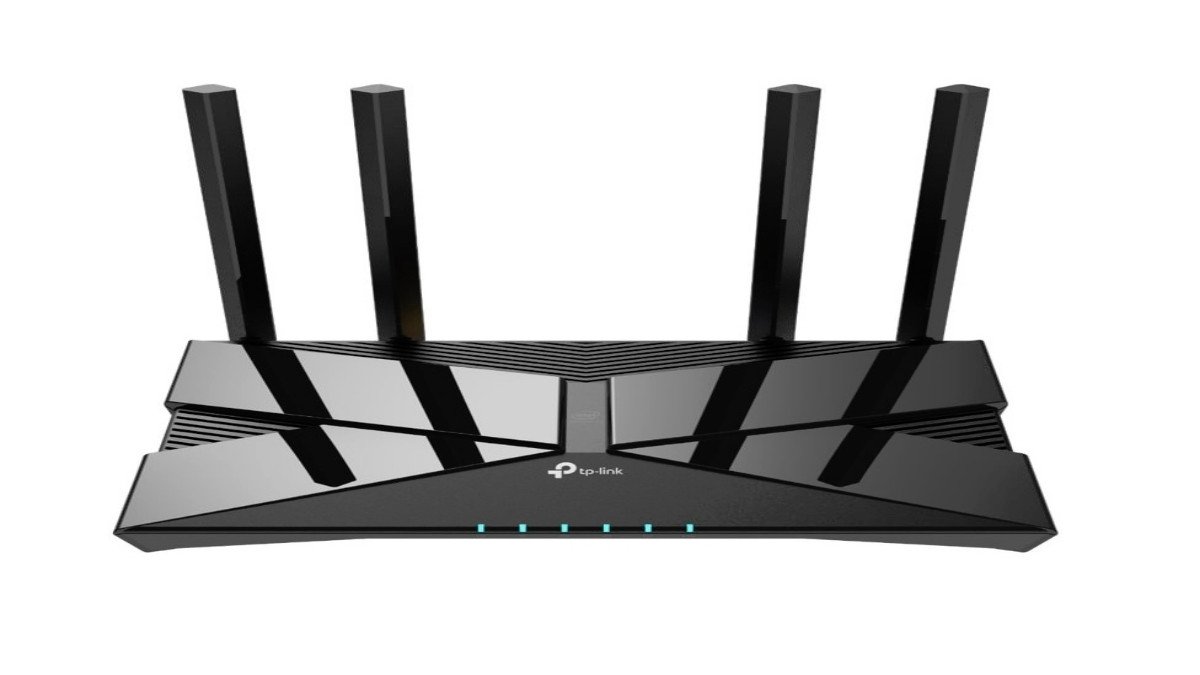
The Archer AX50 from TP-Link is a fantastic option if you are searching for a fully functional Wi-Fi 6 router at a low price.It is a tremendous improvement to TP-incredibly Link’s affordable Archer AX10 that brings back the critical frills while providing more than adequate performance for the average home. One benefit of the dual-band AX3000 Wi-Fi 6 is its adequate range to cover an apartment, condo, or modest-sized home. It has a solid 2.4Gbps 5GHz band and a more standard 600Mbps on the 2.4GHz side.
A lifetime subscription to TP-HomeCare Link’s security features, which includes malware protection powered by Trend Micro as well as some incredibly sophisticated parental controls and quality of service features—all without requiring a monthly subscription—as well as 160MHz-wide channels for getting top single-client performance, are additional pleasant surprises for a router in this price range. You may do this to set time limitations for different family members, protect your children’s online safety, and guarantee that your most crucial devices have the bandwidth they require for gaming and streaming.
One more trick the AX50 has up its sleeve is port aggregation, which enables you to combine two Ethernet ports with supporting a 2Gbps connection, either for a high-speed WAN link or to get the best performance out of a network attached storage (NAS) device in your home. The usual array of four Gigabit Ethernet ports around the back is not a big surprise. The low-cost AX10 lacks a USB 3.0 port, which enables network backups, file and printer sharing, and even supports Time Machine for Mac users.
Pros
- very reasonable
- Port aggregation for LAN
- Free of charge, advanced security and parental controls
Cons
- For security feature configuration, a mobile app is needed.
- NAS performance issues
8. Netgear Nighthawk RAX120 12-Stream AX6000 Wi-Fi 6 Router

The Netgear Nighthawk RAX120 is a high-performance Wi-Fi 6 router that also has a stylish design. Two sweeping hawk-like wings complement its sleek, futuristic form, or as one of our reviewers put it, “like a cross between a spaceship and the Batmobile.” However, these upright wings serve more purposes than merely aesthetic appeal. They enable it to conceal eight high-performance beamforming antennas without allowing them to protrude in all directions like some high-tech spider. Because of its simple form, you might feel more at ease displaying the RAX120 on your credenza than keeping it hidden in the basement.
The AX6000 router’s sleek edges match its performance, including 8-stream MU-MIMO functionality to ensure that all your devices receive an equal amount of your internet bandwidth and the standard 4.8Gbps on the 5GHz and 1.2Gbps for 2.4GHz devices. While Wi-Fi 6 clients will naturally provide maximum performance, it can also support older 802.11ac Wi-Fi 5 devices. The RAX120 is also prepared to handle speedier 2Gbps internet plans because it can aggregate two of its six Gigabit Ethernet connections.
One of them also includes a unique 2.5/5Gbps Ethernet connector that can be utilized to connect a network attached storage (NAS), high-performance gaming console, or downstream hub for the highest wired throughput possible. Although you cannot use them for printer sharing, two USB 3.0 connections are provided for directly connecting network storage. The RAX120 now supports Netgear’s Armor cybersecurity package to protect your network from viruses and malware. However, regrettably, unlike the security capabilities featured on some Asus and TP-Link routers, you will need to pay a regular monthly subscription to access them.
Pros
- sleek style
- Ethernet 5Gbps port
- Link aggregation for multi-gigabit internet services is supported.
Cons
- Features of security demand ongoing subscription
- Printer sharing cannot be done via USB ports.
9. Linksys Velop AX4200 Tri-Band Mesh Wi-Fi 6 System (MX12600)
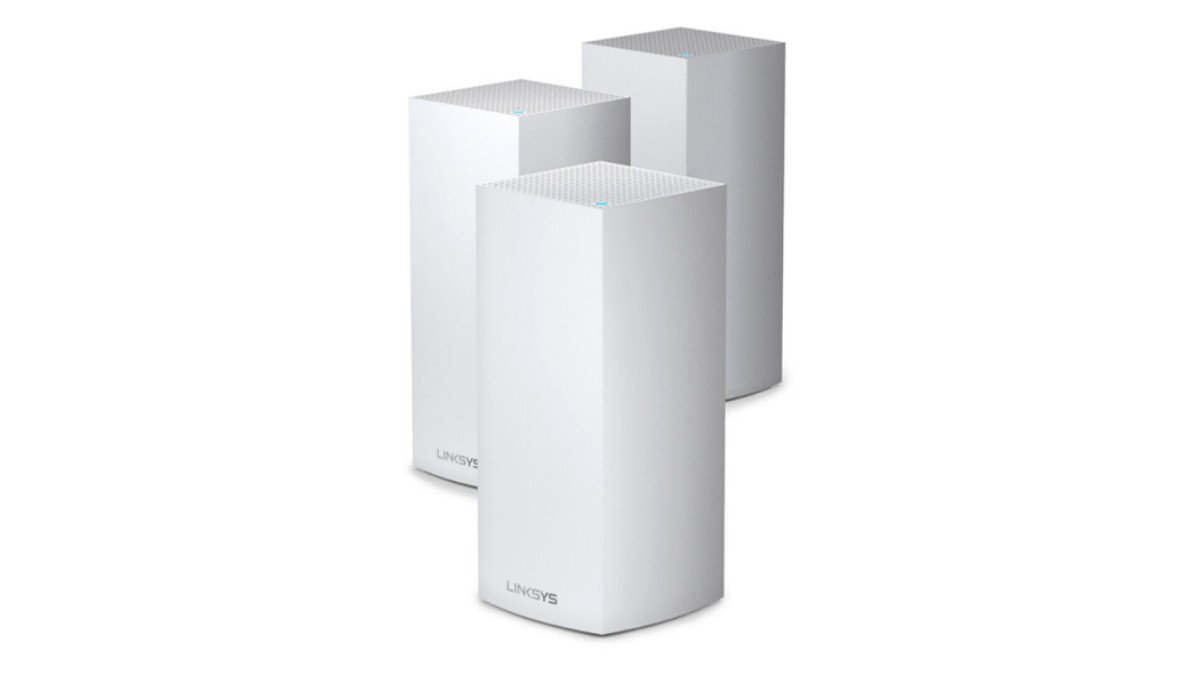
The Velop MX12600 Mesh Wi-Fi system from Linksys provides exceptional performance and range at an unexpectedly low cost. While it does not provide quite the same insanely fast performance as Orbi’s AX6000 mesh system, Linksys gives you three tri-band AX4200 mesh units for about the same price as most competing mesh Wi-Fi systems with only two satellites. It delivers more than enough for most large homes at a significantly easier price on the wallet. Each unit also has a USB 3.2 connector and four Gigabit Ethernet ports on the back, giving you plenty of room to plug in wired appliances like PCs, smart TVs, and gaming consoles across your house.
The dynamic backhaul channel will not be required if the three units are connected in a wired mesh configuration, providing complete tri-band Wi-Fi coverage across your home. In contrast, the second 5GHz band in Orbi mesh systems is always a dedicated backhaul channel, even in a wired design. Additionally, the USB connector allows astonishingly quick NAS performance and allows you to plug in external storage devices virtually anywhere in your home. Sadly, the only severe criticism of the Velop system—which, depending on your needs, could be significant—is that it does not offer any unique parental or anti-malware features beyond fundamental device time limitations and manual URL filtering. To be clear, the Velop is an AX4200 system from top to bottom; if you do the arithmetic, you will notice that the MX12600 moniker only refers to the fact that you get three units, but it is misleading because you are not receiving AX12600 speeds.
However, this Velop system provides you with two 2.4Gbps and 1.2Gbps 5GHz channels and a single 600Mbps 2.4GHz band. Most crucially, however, is that thanks to Linksys’ use of a dynamic backhaul channel based on network demand, all the bands may be usable by your Wi-Fi 6 clients. We had no issues making Zoom calls or watching Netflix in 4K across several devices when using it in practice.Furthermore, the three devices can comfortably handle residences up to 8,100 square feet, which means that this system has some of the most acceptable range for the money among the Wi-Fi 6 routers we examined without compromising performance.
Pros
- Wi-Fi 6 triband
- terrific coverage
- Cost-effective Mesh Technology
Cons
- Need a smartphone app to put up the initial mesh
- For multi-gigabit broadband services, insufficient
- lacking some cutting-edge features
Final Words
The RT-AX88U from Asus checks all the appropriate boxes for a flexible and reasonably priced Wi-Fi 6 router that can accommodate the requirements of the majority of homes. However, TP-Archer Link’s AX10 is a no-frills router at a price that’s hard to beat for its performance for a reasonably inexpensive way to enter the world of Wi-Fi 6.
About our Trusted Experts
Jesse Hollington has been a freelance writer for more than ten years and has worked in networking and information technology for three decades. In settings ranging from single-family homes to office buildings, he has installed, tested, and configured every router, firewall, wireless access point, and network extender. Even coast-to-coast wide-area network (WAN) deployments on college campuses.
A seasoned tech writer with a background in car maintenance, Jeremy Laukkonen understands the value of demystifying challenging technical topics for laypeople. He runs his car blog on the side and is an expert in VPNs, antivirus, and home electronics.
Freelance tech journalist Erika Rawes has contributed to publications such as Digital Trends, USA Today, Cheatsheet.com, and others. She spends her free time fishing, playing board games, and participating in water sports when she is not researching the newest technology. Erika has examined over 50 consumer electronics items, including cameras, thermostats, and kitchen appliances.
FAQs
1. Is purchasing a Wi-Fi 6 router worthwhile?
Yes, to answer briefly. Given that Wi-Fi 6 is now widely used, there are no good reasons not to use a Wi-Fi 6 router when it comes time to upgrade. You do not need to do anything special to get Wi-Fi 6 compatible clients; you will end up with Wi-Fi 6 devices as you upgrade your consumer electronics anyway, so you might as well get a router ready for them. Modern wireless devices like recent iPhones, Samsung Galaxy smartphones, and even Sony’s PlayStation 5 already offer Wi-Fi 6 support by default, and it is becoming standard on almost all new laptops.
2. Better range—do Wi-Fi 6 routers deliver it?
Yes. While Wi-Fi 6 routers do not produce more power than their 802.11ac Wi-Fi 5 counterparts, they benefit from more recent advancements that enable higher speeds to be maintained over longer distances. This implies that while you may not necessarily have more excellent range overall, you will almost surely experience a faster signal at the farthest points, which is the primary goal of an excellent long-range router.
3. How can I tell whether my equipment is Wi-Fi 6 ready?
The most straightforward approach is to check your device’s manufacturer’s specifications to see if they show “Wi-Fi 6” or “802.11ax” as the device’s wireless capabilities. However, most well-known consumer electronics manufacturers have accepted the standard, so chances are that if you have purchased a new iPhone, Samsung smartphone, iPad, or MacBook, it already has Wi-Fi 6 built-in. Though all Wi-Fi 6 routers are fully compatible with the more antiquated 802.11ac Wi-Fi 5 and even the 802.11n Wi-Fi 4 protocols, you should not worry if you still have older devices.
4. The Complete Guide to Purchasing a Wi-Fi 6 Router
Since new Wi-Fi standards do not appear all that frequently, Wi-Fi 6’s introduction is a significant event. Since the 802.11ac standard (now retroactively known as Wi-Fi 5) first appeared almost ten years ago, it makes logical that the time is right for an entirely new class of wireless routers that can meet the demands of today’s internet users. Considering that ten years ago, consumer-level 4K TVs were essentially unheard of, Netflix and other video streaming services had not yet established themselves.
Additionally, the majority of homes only had a small number of gadgets. In other words, most users were not placing the same demands on their home networks. Today, however, it is not unusual to find families where each member owns a smartphone, tablet, and laptop in addition to one or more home game consoles and smart TVs. This is before even considering that nearly everything, from your living room lights to your toaster, wants to be connected to the internet.
Modern Wi-Fi routers must therefore handle a lot more than they used to. While manufacturers have done a commendable job of pushing outmoded 802.11ac Wi-Fi 5 technology to deliver the performance required for frantic online gaming, 4K streaming, and uninterrupted video conferencing, the issue is ultimately best resolved by updating the underlying Wi-Fi standard to handle today’s challenges.
5. Why Buy a Wi-Fi 6 Router?
Even if you might feel uneasy about adopting newer technology, the good news is that Wi-Fi 6 is backward compatible with previous devices and has already attained a decent level of maturity. In addition to 802.11ac Wi-Fi 5 devices, this includes 802.11n Wi-Fi 4 devices and the comparatively old 802.11g and 802.11b standards.
In other words, just because you get the most advanced Wi-Fi 6 router, you will not have to worry about losing compatibility with your earlier Wi-Fi devices. Many connected home gadgets still use 802.11g because they do not require anything faster. This backward compatibility is not limited to older devices, however. Therefore, the query is: Why not purchase a Wi-Fi 6 router? The cost of a simple Wi-Fi 6 router has decreased to the point that it is comparable with older Wi-Fi 5 routers as the new wireless standard becomes more widely adopted.
However, suppose you are in the market for a new router anyhow. In that case, there is almost no reason you should not consider a Wi-Fi 6 router unless you are on a tight budget or require some particular features only available in a Wi-Fi 5 router. Of course, if you are happy with your current router, there is no reason to rush out and upgrade immediately.
You can acquire a Wi-Fi 6 router to prepare for the future, even if you do not have any Wi-Fi 6 devices. Before long, you will probably have some Wi-Fi 6 devices connected to your network. Since Wi-Fi 6 was first included in nearly all of Apple’s and Samsung’s devices in 2019, if you have an iPhone 11 or a Galaxy Note 10, you already have a Wi-Fi 6 device.
6. Advantages of Wi-Fi 6
However, as both ends of the connection must adhere to the same standard, even if you have a Wi-Fi 6 smartphone or laptop, you will not be able to benefit from it unless you are also using a Wi-Fi 6 router. Naturally, Wi-Fi 6 gives quicker speeds, as you may have already surmised, but the new technology offers much more than increased speed. A Wi-Fi 6 router probably has the fewest advantages in terms of single-client speed.
After all, a reliable Wi-Fi 5 connection, capable of providing speeds of up to 800 Mbps to a single device, is rarely used to its total capacity by users. However, Wi-Fi 6 routers excel in their capacity to transmit those rates over greater distances. There will always be a falloff in speed when a wireless signal weakens. However, Wi-Fi 6 routers use cutting-edge signaling techniques like enhanced MU-MIMO and orthogonal frequency-division multiple access (OFDMA) to maintain better speeds even at greater distances from the router.
The same technologies also enable Wi-Fi 6 routers to handle congestion much more effectively by eliminating device interference. In other words, a Wi-Fi 6 router can support more devices on your home network than a comparable Wi-Fi 5 router. The public networks in areas like malls and sporting arenas would benefit the most from this, but residential users will also benefit significantly from it.
Last but not least, Wi-Fi 6 uses less energy, which can be an excellent benefit for battery-powered devices like smartphones. Devices can enter a reduced power mode when not actively sending or receiving data because of a Target Wake Time (TWT) feature. You will not need to worry about hitting a charger with your iPhone or Galaxy nearly as much while lounging around at home because tests have shown that this results in a 67 percent reduced power usage than an identical Wi-Fi 5 device.
7. Dual-Band or Tri-Band Frequencies?
First, single-band Wi-Fi 6 routers do not exist, in contrast to the previous 802.11n Wi-Fi 4 routers and the infrequent Wi-Fi 5 router. Dual-band Wi-Fi is the minimum need on all Wi-Fi 6 routers because Wi-Fi 6 operates on both the 2.4GHz and 5GHz frequencies. In contrast, 802.11ac Wi-Fi 5 only used the 5GHz band, which had a higher frequency. Accordingly, your devices would be switching to slower 802.11n Wi-Fi 4 technology when you switched to the 2.4GHz band, regardless of the Wi-Fi 5 router you were using.
The general guideline for Wi-Fi frequencies is that as the frequency increases, the range decreases, but speeds increase. As a result, 2.4GHz has a more excellent range than 5GHz, yet 5GHz is quicker. There are always tradeoffs. However, as Wi-Fi 5 devices can only operate at Wi-Fi 4 speeds, the 2.4GHz band is much slower than Wi-Fi 5 routers. This resulted in even slower speeds while drifting further away from the router because 2.4GHz frequencies can go farther through walls than 5GHz ones.
On the other hand, a Wi-Fi 6 router can utilize the most recent and fastest 802.11ax Wi-Fi 6 technology across all of its bands. Even when your devices switch to the 2.4GHz bands, you might still experience surprisingly fast speeds. However, there is one warning: Some less costly Wi-Fi 6 routers, like the Archer AX10 from TP-Link, cut costs by only providing Wi-Fi 4 speeds on the 2.4GHz band. Budget routers tend to exclude it, which is sensible, but you should still look for it.
There are also tri-band Wi-Fi 6 routers that, like tri-band Wi-Fi 5 routers, offer a second 5GHz band.
However, since Wi-Fi 6 is significantly better at handling congestion and can deliver all of its benefits on the lower-frequency 2.4GHz band, there is less need to use a tri-band router, especially if the majority of your high-performance wireless devices already support Wi-Fi 6. It is also crucial to remember that any given wireless device can only connect to one band at a time when using a tri-band router. For a single device, a tri-band router will never provide faster speeds, but if you have a lot of 5GHz devices on your home network, the additional band can assist divide them up to prevent congestion.
However, using it in a wireless mesh Wi-Fi system is another excellent reason to get a tri-band Wi-Fi 6 router. In this scenario, you may use the extra band as a backhaul channel to keep communication between your mesh stations moving quickly without compromising client-facing performance. Tri-band Wi-Fi is used explicitly by mesh systems like the Orbi AX6000 and Velop AX4200. However, you should also consider this if you plan to build a mesh Wi-Fi 6 system using conventional routers and technologies like Asus’ AiMesh or TP-OneMesh. Link’s
8. What about Wi-Fi 6E?
You may be familiar with Wi-Fi 6E, a developing technology that expands upon the Wi-Fi 6 standard. As the name suggests, it is a development of Wi-Fi 6, not a whole new Wi-Fi technology, moving wireless traffic into a new 6GHz band quicker and less likely to experience congestion. Wi-Fi 6E routers are only just starting to become available. Most tri-band routers offer separate 2.4GHz, 5GHz, and 6GHz bands rather than a single 2.4GHz band and two additional 5GHz bands.
Unfortunately, Wi-Fi 6E is not yet supported by the majority of client devices. Thus it could be premature to purchase a Wi-Fi 6E router. Furthermore, Wi-Fi 6E routers are essentially dual-band routers for non-Wi-Fi 6E devices because they have no access to the third 6GHz band, in contrast to regular tri-band Wi-Fi 6 routers, which have two 5GHz bands that your Wi-Fi 5 devices may also utilize.
9. Speed: How Much Do I Need?
Wi-Fi 6 routers use an “AX” prefix to specify their speed ratings because the more technical name for the Wi-Fi 6 standard is 802.11ax. The number following the AX shows the overall speed across all frequency bands. As a result, an AX6000 router has a throughput capacity of 6Gbps (6,000Mbps). However, this throughput will be spread across two or three separate wireless bands. AX6000 or slower Wi-Fi 6 routers are typically dual-band routers, whereas AX11000 devices are tri-band.
Currently, any Wi-Fi 6 router will deliver a single-band maximum speed of 1.2Gbps on the 2.4GHz side and 4.8Gbps on the 5GHz side. This would be either an AX11000 tri-band router (4.8Gbps + 4.8Gbps + 1.2Gbps) or an AX6000 dual-band router (4.8Gbps + 1.2Gbps). Of course, not everyone reaches that level. It is widespread to find AX3000 Wi-Fi 6 routers, which typically offer 2.4Gbps/600Mbps or 1.8Gbps/1.2Gbps speeds on the 5GHz and 2.4GHz channels. The tri-band mesh Wi-Fi routers Eero Pro 6 and Linksys Velop, which have an even more peculiar split of 2.4Gbps/1.2Gbps/600Mbps, both use the AX4200, which is also relatively common among them.
The speedier 5GHz frequency here serves as a wireless backhaul. Similar functions are performed by the Netgear Orbi AX6000, except that the second 5GHz band on it is also 2.4Gbps (2.4Gbps/2.4Gbps/1.2Gbps). Nevertheless, the question you are presumably wondering is, how much does this matter? To put these figures into perspective, consider that a 4K UHD stream from Netflix only needs a maximum of 25Mbps of bandwidth per device and that even when 8K streaming services are available in the future, they will probably have a 65–80Mbps bandwidth cap.
Therefore, you might be surprised to learn that an AX1500 or AX3000 Wi-Fi 6 router will probably be more than adequate for your needs if you have a small family. Higher speeds are ultimately designed to accommodate busy houses because they provide enough bandwidth to ensure every device in your house can receive the internet performance required. A speedier AX4200 mesh system or AX6000 router is more valuable if your family is more prominent and includes children who are constantly online.
Downloading is a different matter, and if you frequently download large files, it is nice to have the extra bandwidth to download those 4K movies to your hard drive or NAS device in just a few minutes, as opposed to a few hours. However, remember that your wireless router can never provide download speeds faster than your internet connection.
10. Range and Coverage
Making sure that you purchase a Wi-Fi 6 router with enough range to cover your complete living area is one factor that does not alter much with this technology. While Wi-Fi 6 routers can provide faster speeds at greater distances, there is still a limit to their coverage, so it is best to consider having a mesh Wi-Fi system rather than a single router if you have a larger home and desire optimal performance everywhere you need it.
Most of the top Wi-Fi 6 routers can reach homes up to 5,000 square feet in size, although your results may vary based on your home’s architecture. Solid things obstruct wireless frequencies, and metal and concrete block more of the signal than wood and drywall. Attenuation is happening, and as the signal weakens, so do your speeds. Even if Wi-Fi 6 is better at providing decent performance with a lesser signal, the laws of physics still apply.
Even the most advanced wireless technologies cannot do much if the signal weakens.Nevertheless, as was already said, Wi-Fi 6 has the advantage of additionally supporting 2.4GHz frequencies. These have more range and remarkable ability to pass through solid things. However, they are still susceptible to interference from other home appliances like cordless phones, microwaves, and garage door openers. The good news is that there is still hope if you have already purchased a Wi-Fi 6 router and discover that it does not provide enough range.
A Wi-Fi 6 router can have one or more Wi-Fi extenders added to it to increase its range. While some excellent Wi-Fi 6 extenders are available, if performance is not a problem, you can also add older Wi-Fi 5 extenders.
For example, this can be a cost-effective approach to increase coverage for low-bandwidth intelligent home devices. AiMesh is a proprietary technology provided by some router manufacturers, including Asus and TP-Link, that enables you to create your own mesh Wi-Fi network by connecting an additional compatible router.
If you have the money to spend, this is an excellent way to expand your wireless coverage, even though it is not as cheap as a Wi-Fi extender.
Wired Connections
Even with Wi-Fi 6 technology’s improved performance, sometimes the best speeds come from simply plugging your devices in. For games, cable connections nearly always provide lower latency than Wi-Fi. Most Wi-Fi 6 routers provide at least four Gigabit Ethernet ports, and some go as high as eight. Additionally, it is not unusual to see specialized, faster 2.5Gbps and 5Gbps Ethernet connectors. These can link a high-performance gaming PC to network-attached storage (NAS) device, among other uses depending on the router. However, suppose you are lucky enough to have a multi-gigabit internet subscription.
In that case, you should focus on finding a Wi-Fi 6 router that enables you to use this as a WAN port for establishing a connection to your upstream provider. However, your cable modem or other upstream links must also support the same link aggregation technology in that scenario. As an alternative, some routers can allow you to hook up, or “aggregate,” two Gigabit Ethernet ports to create a single 2Gbps connection. Nevertheless, regardless of how fast your internet service is, you will only be able to get 1Gbps broadband speeds unless you have a Wi-Fi 6 router that supports a faster Ethernet connection or link aggregation.


